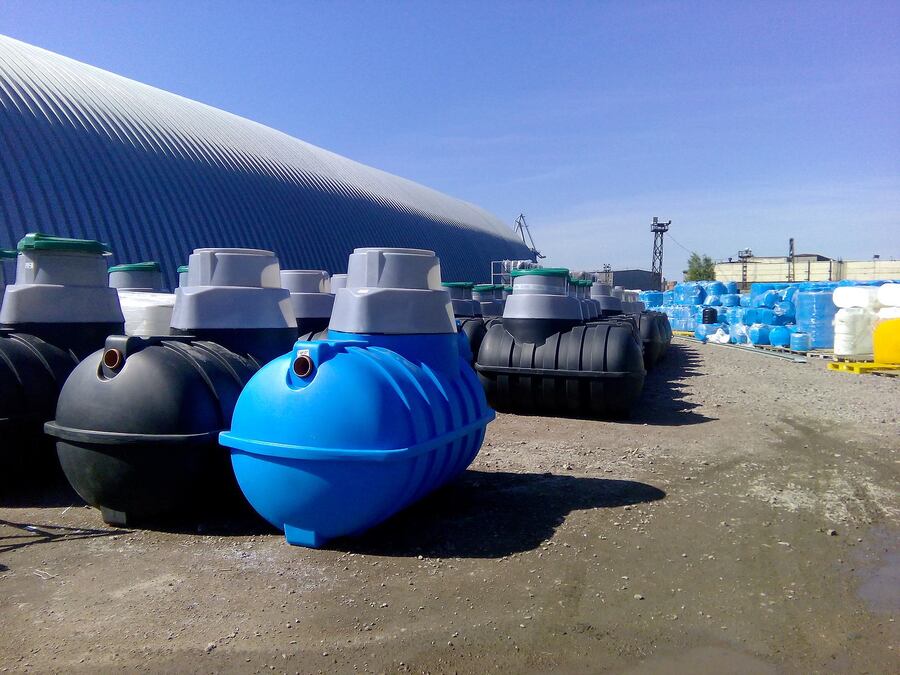WE NOT ONLY PUMP YOUR TANK - WE CLEAN IT! Free Septic System Inspection ($99 Value) Free enzyme treatment , Financing Available
Call Septic Blue Now 813-355-9188
It's Easier Schedule Online
WE NOT ONLY PUMP YOUR TANK - WE CLEAN IT! Free Septic System Inspection ($99 Value) Free enzyme treatment , Financing Available
Call Septic Blue Now 813-355-9188
It's Easier Schedule Online

When it comes to installing a septic system, homeowners face an important decision about what kind of materials their septic tank should be made from. This choice impacts not only the installation process and maintenance but also the longevity and efficiency of your septic system. With different options offering distinct advantages and considerations, it's essential to weigh them carefully to ensure your septic system serves your household efficiently for years to come. At Septic Blue, we offer a wide range of services including septic tank installation as well as septic pumping. Read more to compare your options so you can make the right decision for your property.
Plastic septic tanks, which are known for their lightweight nature, offer ease of transport and installation that can often translate into lower initial costs. Because they’re made from high-density polyethylene or polyvinyl chloride, these tanks are resistant to corrosion, which is a common issue in more traditional materials. Their smooth interior surfaces discourage the growth of algae and bacteria and so contribute to a cleaner system overall. However, despite these benefits, plastic tanks have their downsides, including susceptibility to structural damage if not properly installed or if exposed to heavy external pressure.
When considering a plastic septic tank, you'll find many different options in terms of design, size, and specific features designed to enhance performance and longevity. Some plastic tanks are designed with innovative technologies to improve effluent quality, reduce maintenance needs, or enhance durability against external pressures. Selecting the right model involves balancing your household's needs, site conditions, and budget to find the best fit for your property.
Concrete septic tanks are celebrated for their durability and longevity. These tanks are incredibly powerful and capable of withstanding external pressures and environmental factors that might compromise other materials. Their weight may make installation more challenging and possibly more costly, but they’re much less likely to shift or float. Concrete tanks can last for decades with proper maintenance, but they are prone to cracking over time, which can lead to leaks and the need for repairs.
Regardless of the material you choose, the installation and maintenance of your septic tank are important to its performance. Plastic tanks, lighter and more maneuverable, can be easier and faster to install, which can help property owners potentially save on labor costs. They require careful handling to prevent cracks or punctures and must be installed on a well-prepared base to avoid shifting or floating in areas with high groundwater levels. Regular maintenance, including inspections and pumping, is vital to prevent overloading and to ensure the system operates effectively.
The decision between plastic and concrete septic tanks involves careful consideration of their advantages and limitations. At Septic Blue, we specialize in customized, tailored septic solutions that meet our customers' unique needs. Our experience in installation, maintenance, and repair ensures that whichever type of tank you choose, your septic system will be a reliable and efficient component of your home for years to come. Have you been searching for a septic tank company or service provider that can help with your septic tank installation or septic pumping needs? Contact us today for guidance on selecting the perfect septic tank for your home or to schedule an appointment for professional septic service.
Taking care of your home’s septic system is a big…
Read More+The health of your septic system depends significantly on what…
Read More+When your septic system is working properly, it’s out of…
Read More+